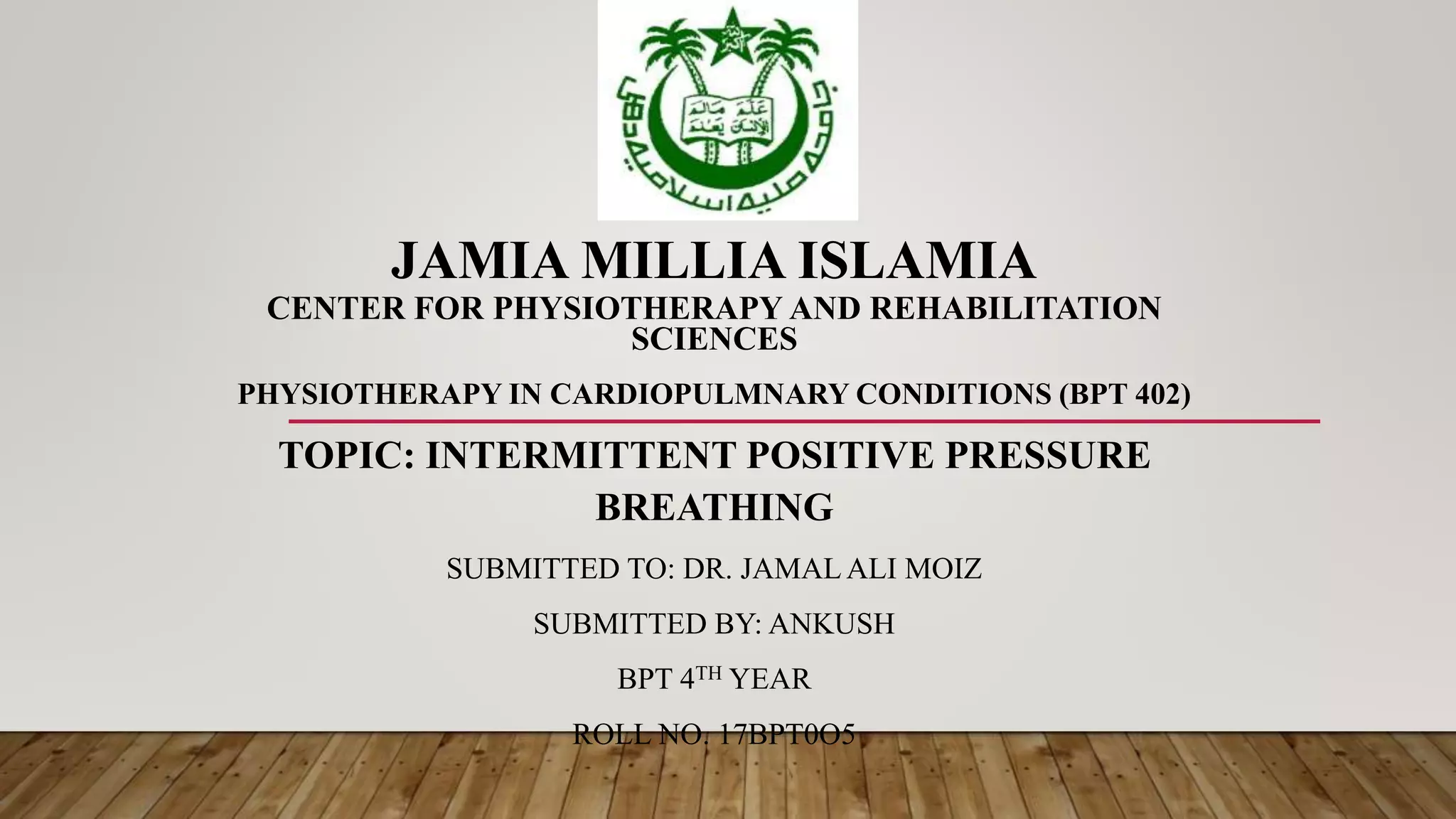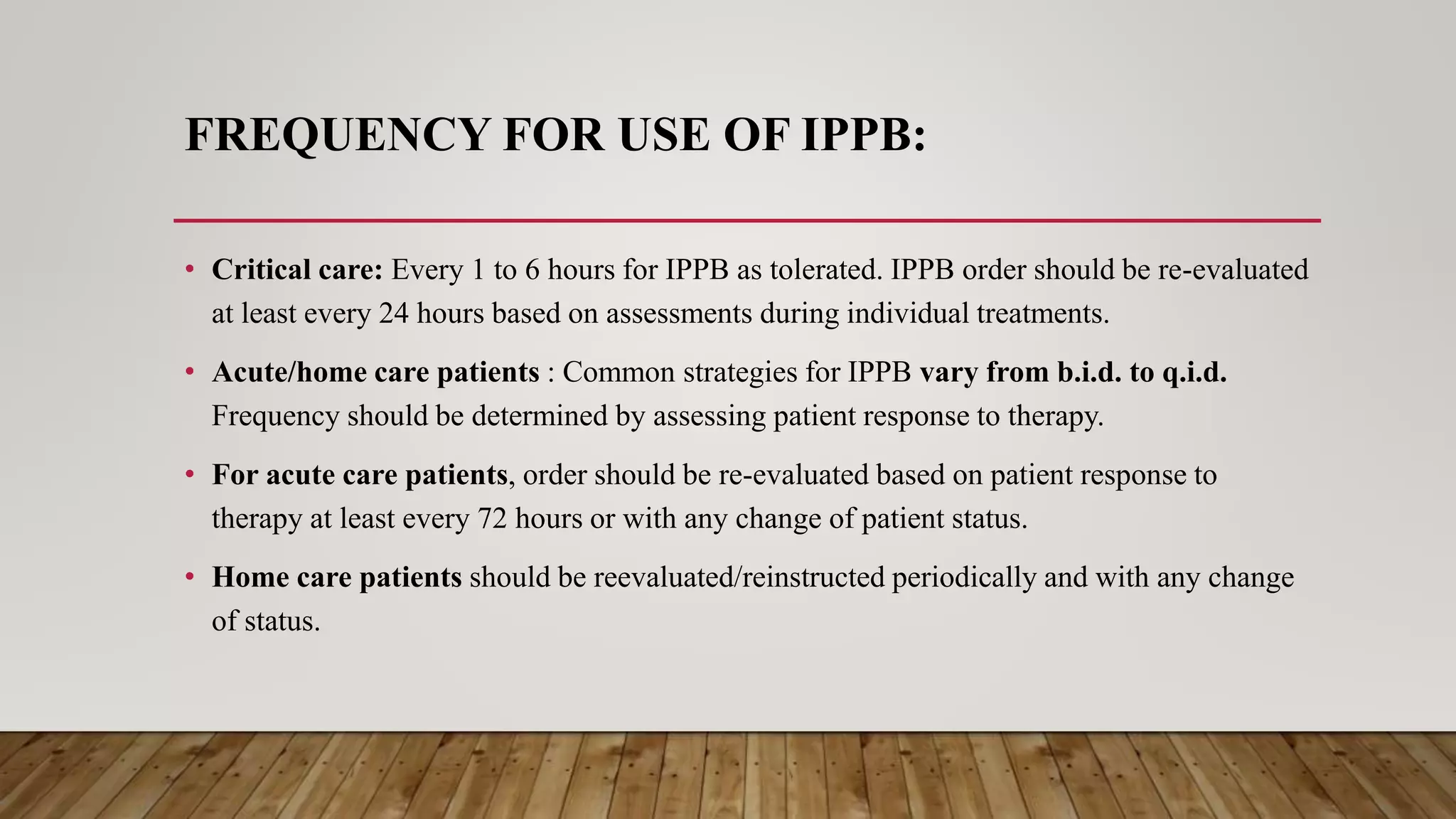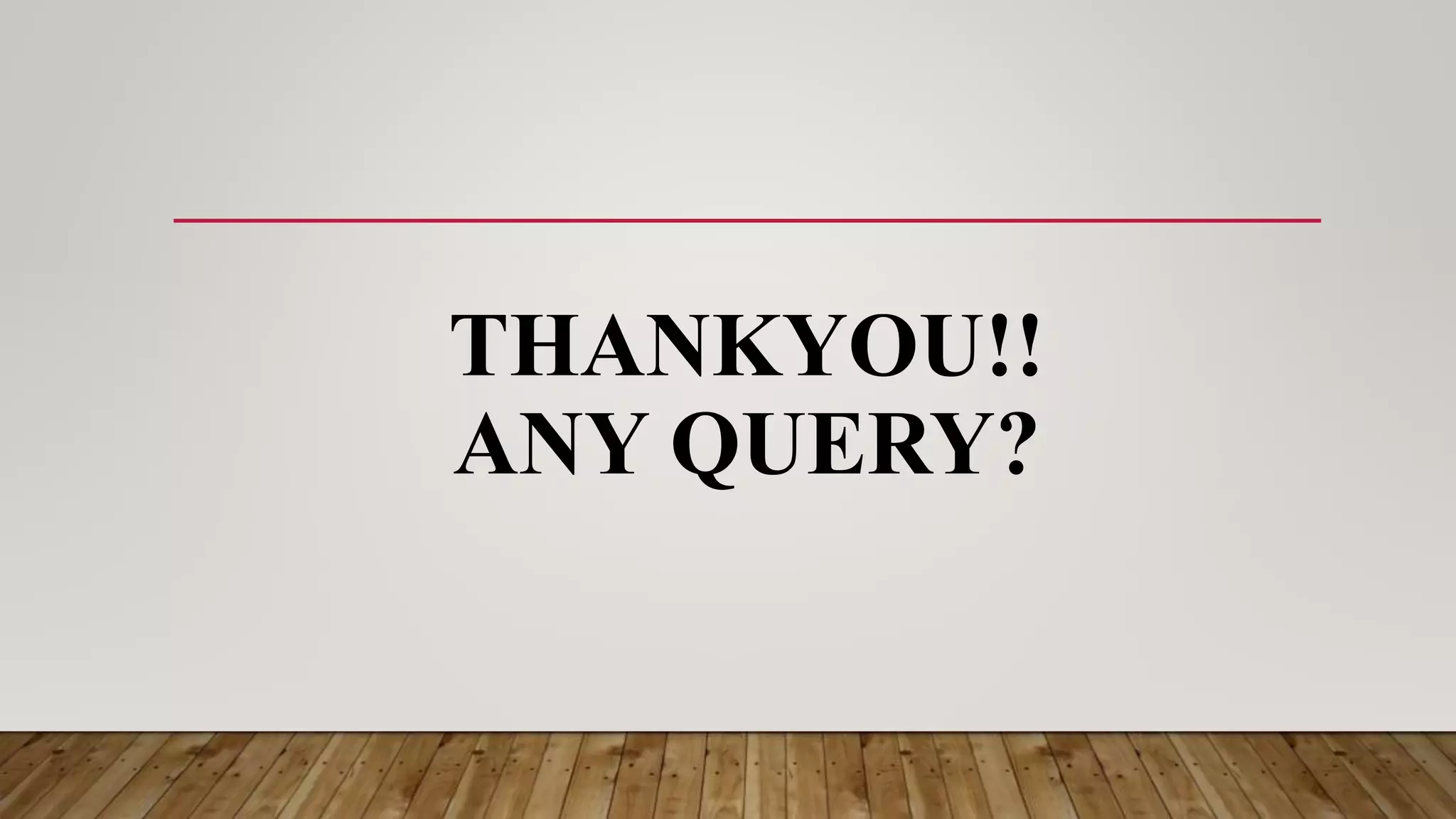Embed presentation
Downloaded 28 times

















Intermittent positive pressure breathing (IPPB) is an assisted breathing technique that provides intermittent mechanical ventilation through a mouthpiece or mask. It is used to improve lung expansion and deliver aerosolized medications. While IPPB can help increase inspiration volume and support weak muscles, it is not usually the preferred treatment due to risks of barotrauma and availability of less expensive techniques. The Bird Mark 7 ventilator is commonly used for IPPB, which can benefit patients with atelectasis, secretion retention, or acute exacerbations requiring stronger inspiration. However, the effects of IPPB are short-lived and it is a more labor-intensive method of aerosol delivery than other available options.
















